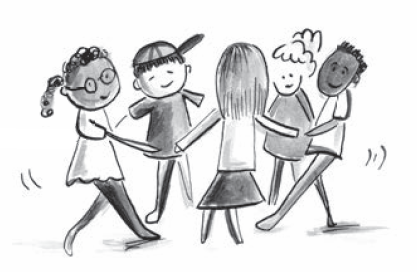Introduction
For young children who are English Language Learners (ELLs), the home language is the vehicle by which they are socialized into their families and communities. It is the medium that fosters their earliest and most enduring relationships, their initial ideas about how the world works, and their emerging sense of self and identity. When preschool ELLs enter English-only preschool classrooms, they may lose their desire and eventually their ability to speak their home language. The development of linguistic, cognitive, and literacy skills in the child’s first language provides the foundation for learning these skills in English. The knowledge and skills children demonstrate in their home language can be applied to the learning of English for social and academic purposes. Therefore, a child’s understanding and ability to use her home language is the first step in acquiring English proficiency and English literacy skills.
Recent research from cognitive neuroscientists has found that
- the preschool years are an ideal time for children to learn two languages;
- there are multiple cognitive, social, and cultural benefits when young children have the opportunity to learn more than one language;
- knowing more than one language does not delay the acquisition of English or impede academic achievement in English when both are supported; and
- children who learn English after their home language has been established (usually around 3 years of age) are capable of adding a second language and this dual-language ability confers long-term cognitive, cultural, and economic advantages. Some children learn two languages simultaneously, starting before the age of 3, and follow similar developmental trajectories as their monolingual peers when the development of both languages is supported.
The early childhood years are the critical time for developing mastery of the sounds, structures, and functions of language and thus an ideal time to expose children to the benefits of two languages. Therefore, the Illinois ELL Home Language Development Standards begin with home language goals and benchmarks. These indicators of progress in mastering the elements of the home language are critical to the process of acquiring English proficiency and developing the underlying linguistic knowledge necessary for academic success in English.
Geraldo and his co-teacher, Mingyu, have children from families who speak many different languages in their homes. Both teachers recognize the importance of a child’s first language and work hard to use words and phrases they hear at home. They invite families to teach them so they can expand their own capabilities to communicate with the children. They also know that as children participate in an English-speaking environment, their brains are busy processing and interpreting what is being said. They are patient and understanding, letting each child know that he can communicate in whatever way works best for him. They are amazed as they watch children with various languages at play together. The amount of accommodation they make for each other is so heartwarming.
Example Performance Descriptors can be found on the List of goals, standards, and benchmarks page.
Goal 28: Use the home language to communicate within and beyond the classroom.
Learning Standard 28.A: Use the home language at age-appropriate levels for a variety of social and academic purposes.
Preschool Benchmarks
- 28.A.ECa: May demonstrate progress and mastery of benchmarks through home language.
- 28.A.ECb: Use home language in family, community, and early childhood settings.
- 28.A.ECc: Develop an awareness of the different contextual and cultural features in the early childhood and community settings the child participates in.
Goal 29: Use the home language to make connections and reinforce knowledge and skills across academic and social areas.
Learning Standard 29.A: Use the home language to attain benchmarks across all the learning areas and to build upon and develop transferable language and literacy skills.
Preschool Benchmarks
- 29.A.ECa: Use home cultural and linguistic knowledge to express current understandings and construct new concepts.
- 29.A.ECb: With adult support, begin to bridge home language and English to demonstrate progress in meeting IELDS.
- 29.A.ECc: Exhibit foundational literacy skills in home language to foster transfer to English.


